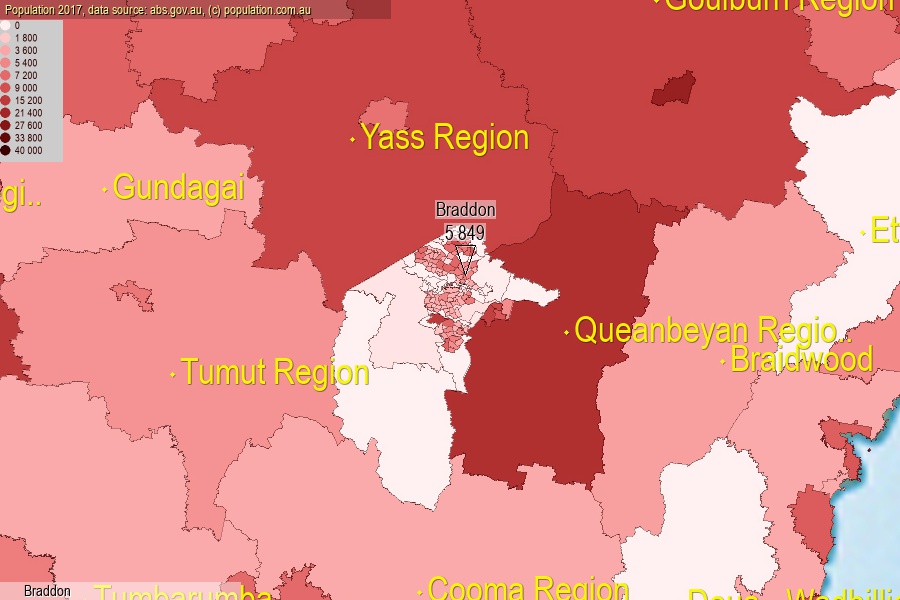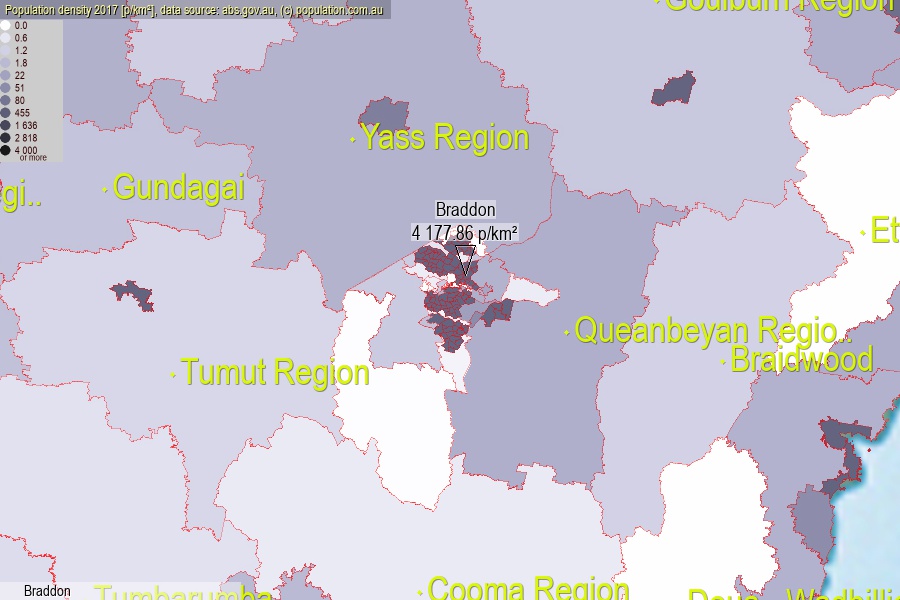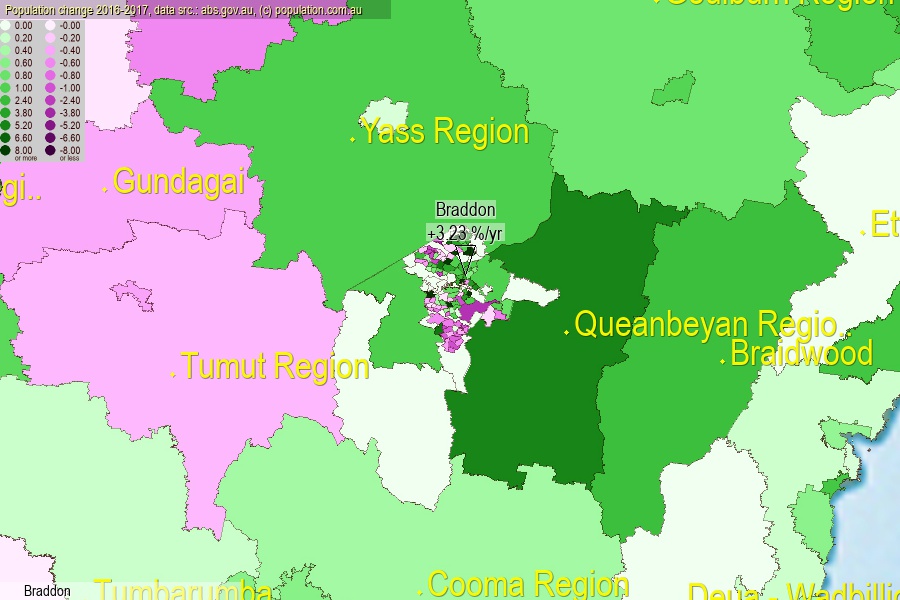 population.com.au
population.com.auLast official estimated population of Braddon (as Statistical Area Level 2) was 5 849 people (on 2017-06-30)[2]. This was 0.02% of total Australian population and 1.395% of ACT population. Area of Braddon is 1.40 km², in this year population density was 4 177.86 p/km² . If population growth rate would be same as in period 2016-2017 (+3.23%/yr), Braddon population in 2025 would be 7 543. [0]



Click to enlarge. Braddon is located in the center of the images.
Population [people], population density [p./km²] and population change [%/year] [2]
View borders » (new window) [4]
[1991-1992] -0.79 %/Yr.
[1992-1993] -2.73 %/Yr.
[1993-1994] +10.55 %/Yr.
[1994-1995] +5.71 %/Yr.
[1995-1996] +9.55 %/Yr.
[1996-1997] +8.60 %/Yr.
[1997-1998] +1.94 %/Yr.
[1998-1999] +2.73 %/Yr.
[1999-2000] +0.35 %/Yr.
[2000-2001] -0.24 %/Yr.
[2001-2002] +0.91 %/Yr.
[2002-2003] +5.72 %/Yr.
[2003-2004] +4.91 %/Yr.
[2004-2005] +4.53 %/Yr.
[2005-2006] +12.40 %/Yr.
[2006-2007] +8.80 %/Yr.
[2007-2008] +6.11 %/Yr.
[2008-2009] +4.10 %/Yr.
[2009-2010] +2.81 %/Yr.
[2010-2011] +3.12 %/Yr.
[2011-2012] +3.90 %/Yr.
[2012-2013] +6.08 %/Yr.
[2013-2014] +2.71 %/Yr.
[2014-2015] +2.56 %/Yr.
[2015-2016] +1.81 %/Yr.
[2016-2017] +3.23 %/Yr.
[0] Calculated with linear interpolation from officially estimated population
[1] Read more about SA2 and Australian Statistical Geography Standard (ASGS) on abs.gov.au
[2] Population data from Australian Bureau of Statistics (Population and density: 2017; change: 2016-2017)
[3] Digital Boundaries: Australian Statistical Geography Standard (ASGS) 2016.
[4] Border coordinates are simplifyed using Ramer-Douglas-Peucker algorithm.